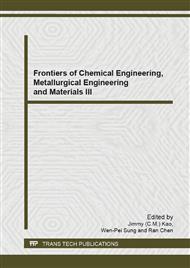p.717
p.721
p.728
p.732
p.736
p.740
p.745
p.749
p.754
Modeling Energy Demand and Carbon Emissions from Transport in Shanghai
Abstract:
Private vehicle traffic is among the main contributors to anthropogenic carbon emissions. Efforts have been made to control private vehicle in major cities around the world to mitigate carbon emissions from transport sector. The aim of the paper was to find policy implications for energy saving and carbon reduction in transportation in the future. Gompertz model and Spread Sheet model were applied in this paper to estimates energy consumption and carbon emissions from Shanghai’s vehicle transport in the future. Results showed that vehicle ownership of the city will reach 6.15 million in 2030. Under BAU scenario, CO2 emissions from Shanghai’s vehicle will reach 34.163 million t in 2030. While under the FEP scenario, gasoline demand will reduce by 30% compared with the baseline scenario. It shows that fuel economy policy is essential in energy saving and carbon reduction in vehicle sector.
Info:
Periodical:
Pages:
736-739
Citation:
Online since:
August 2014
Authors:
Keywords:
Price:
Сopyright:
© 2014 Trans Tech Publications Ltd. All Rights Reserved
Share:
Citation:


